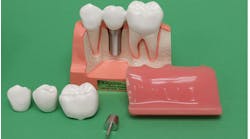In this series, we’ve examined basic financial statements and what each can do for you as a business owner. Read part one, Dental practice accounting: Why financial statements are the key to growing your practice and your wealth. We’ve reviewed how financial statement analysis provides the business owner thorough and unbiased updates about the practice’s overall financial health, delivers warning signs if it’s not performing well or is drifting into dangerous territory, and helps the practice owner identify growth opportunities. But did you know that you can take it even further with ratio analysis?
Here we’ll look at how the financial ratio analysis technique can give you a laser-focused approach to pinpoint and monitor the most critical elements of your dental practice’s performance. Perhaps more important is that using financial ratios for business analysis elevates your expertise to a completely different level—the level expected of finance professionals.
Financial ratios
Financial ratios are mathematical formulas comparing two or more essential elements of financial statements. Financial ratio analysis allows you to directly compare different aspects of a financial statement to evaluate the business enterprise’s economic performance.
These comparisons help you look for trends, problems, and opportunities. In some ways it’s like financial statement analysis, but it allows you to get far more granular in the financial analysis of your practice. A financial ratio (or accounting ratio) is a relative magnitude of two selected numerical values taken from a business’s financial statements.1
Moreover, ratios are designed to measure different financial aspects of the business and connect values related to each other. For example, while liquidity ratios measure how much cash is available to pay short-term debt, debt ratios measure the business’s ability to repay long-term debt. Profitability ratios measure how the business uses its assets and manages its expenses to generate profit and deliver an acceptable rate of return.
What is ratio analysis, and how can it help you?
Think of financial ratios analysis like a blood test. Many stand-alone values of the blood test panel provide you with a clear (however static) picture of the patient’s health status, because you can compare test results with normal ranges posted right next to them. On the other hand, the ratios presented in the blood test allow for a closer examination of the dynamic relationships between physiological functions that helps you diagnose outlier issues properly.
While your financial statements allow you to see actual values, the “normal range” of your practice performance is very individual and only allows you to compare your business performance against itself. Financial ratio analysis enables you to see if your practice is measuring up to a “normal range” of the industry or your peers, letting you know how you perform compared to others. This analysis directs your attention to where it’s needed most.
Read parts one, two, and three of this article series:
Why financial statements are the key to growing your practice and your wealth
Why your cash flow statement is critical
Using financial statement analysis to maximize your profits
It is essential to understand that financial ratios are larger scale analytical tools. Financial ratios generally are only helpful when benchmarked against other values, namely other practices’ past performance values.
Benchmarking is the practice of comparing business processes and performance metrics to industry bests and best practices from other businesses.2 Ratio analysis is a comparative investigation that can help you make better day-to-day decisions to improve your practice performance, especially compared to other practitioners. As it applies to dental practice, financial ratios allow you to compare:
- Between practices either under the same ownership or not
- Between practices either in solo or group arrangements
- Between practices in different geographic locations
- Between different time periods for one or multiple practices
- Between a solo or group practice and the profession average
It’s hard to take steps to support the growth of your practice without first knowing how you stack up to the competition. If you’re looking to assess the health of your business and identify opportunities for improvement, look at your practice’s financial ratios.3
Analyzing the income statement with ratios
Your income statement provides detailed information about your practice’s earnings, expenses, and income. Because of its importance, there are many common ratios that business owners can use to monitor their practice’s progress. Here are three common ratios you should become familiar with.
Gross profit margin. We all agree that profit is paramount, but there’s more than one way to look at it. The gross profit margin ratio shows how much money your business cleared per dollar of revenue. The formula is: Gross profit margin = (Sales revenue – Cost of goods sold) / Sales revenue.4 The number is expressed as a percentage. For example, a gross profit margin of 40% means that your practice keeps 40 cents of every dollar of sales earned. This value is an important indicator of overhead management and is essential in the analysis of the practice’s financial management.
Operating profit margin. A second common ratio is the operating profit margin, which incorporates general expenses (overhead) along with direct costs. This can provide a more realistic view of your profitability. The formula is: Operating profit margin = Operating earnings (EBITDA) / Sales revenue.
Net profit margin. Another standard ratio you’ll generate off the income statement is the net profit margin. Here, you measure the relationship of your net profit to your sales revenue. The formula is: Net profit margin = Net income / Sales revenue.
Obviously, the higher these profit margins, the more of your revenue you’re keeping and the more profitable your practice.
Analyzing the balance sheet with ratios
The balance sheet is another critical financial statement that provides insights into your practice’s assets, liabilities, and owner equity. These ratios can help you dive deeper to look for problems or trends that warrant attention. Here are three fundamental ratios that are commonly used for balance sheet analysis.
Current ratio. The current ratio measures your practice’s liquidity, which means its ability to cover short-term liabilities. The higher the result, the easier your practice can pay its obligations. The formula is: Current ratio = Current assets / Current liabilities.
Quick ratio. Similar to the current ratio, the quick ratio considers only very liquid assets like cash and others that can be quickly converted to cash. Not surprisingly, this ratio is used by lenders to determine your ability to handle debt. A 1:1 ratio or higher is considered healthy. The formula is: Quick ratio = (Cash and cash equivalents + Marketable securities + Accounts receivable) / Current liabilities.
Debt-to-equity ratio. This ratio measures how much your business depends on debt or equity. This ratio is a measure of financial strength. You can calculate it this way: Debt to equity ratio = Total debt / Owner or shareholders’ equity. With this, you want to achieve a 4:1 debt-to-equity ratio or above. This value is usually considered acceptable by lenders.
Analyzing the cash flow statement with ratios
Your practice’s cash flow statement keeps you updated on cash movement in your business. Here are three common ratios used to examine cash position and movement more closely.
Current liability coverage ratio. This ratio measures how much cash flow exists to cover liabilities within a specific time frame (such as one year). This is the formula: Current average liability ratio = Net cash from operating activities / Average current liabilities. A result greater than 1:1 means your practice can cover its short-term obligations, but the higher, the better.
Cash flow coverage ratio. This ratio measures how easily you can pay your practice’s bills with cash. The difference is this measure includes short- and long-term debt obligations and payments. Typically, this is done with an annual look since a short-term measurement would be less meaningful. The formula is: Cash flow coverage ratio = Net cash flow from operations / Total debt. Aim for a ratio above 1.0 to satisfy lenders and investors and keep your business stable.
Cash flow margin ratio. Finally, there’s one other standard ratio to keep tabs on the health of your cash flow. This one measures how much cash you earn for each sales dollar in any given period. The formula is: Cash flow margin = Net cash from operating activities / Net sales. With this measure, the higher the result, the healthier your cash flow.
Why financial ratios are critical in financial analysis
While financial statements provide concrete information reflected in numerical values, financial statement analysis allows you to conduct a comparative analysis between specific time cycles of a business. In contrast, financial ratios are useful tools for the business owner to better analyze financial results and trends over time, reflecting in-depth on relationships between financial values through the prism of their relationships with each other. Further value of financial ratios rests in their ability to provide key indicators of organizational performance, allowing owners or investors to assess business performance compared to their peers.
Finally, you can use financial ratios to identify the practice’s weaknesses and strengths to devise effective business development strategies.
For ratios to be useful and meaningful, they must be:
- Calculated using reliable, accurate financial information
- Calculated consistently from period to period
- Used in comparison to internal benchmarks and goals
- Used in comparison to other dental practices
- Viewed both at a single point in time and as an indication of broad trends and issues over time
- Carefully interpreted in the proper context, considering there are many other important factors involved in assessing performance5,6
A sustainable business process requires effective short- and long-term planning as well as diligent financial management. Ratio analysis is a critical instrument in financial management that can enhance your understanding of financial performance. Further, ratio analysis allows you to look at financial performance results and trends over time. While dentists may use ratio analysis to identify the strengths and weaknesses of their practices, lenders or investors use ratio analysis to measure financial results against other organizations.
As we conclude our six-part series on dental practice accounting, we hope you take one message away: You need to get comfortable with your financial statements. These critical documents provide objective, valuable advice to you as the practice owner. At the same time, they also communicate key points to your lenders, investors, and potential buyers. The sooner you get comfortable with these indispensable tools, the better.
Editor's note: This article appeared in the August 2023 print edition of Dental Economics magazine. Dentists in North America are eligible for a complimentary print subscription. Sign up here.
References
- Juma A. What is a financial ratio? (Definition, benefits and types). Indeed. Updated January 31, 2023. https://www.indeed.com/career-advice/career-development/what-is-a-financial-ratio
- Fifer RM. Cost benchmarking functions in the value chain. Planning Rev. 1989;17(3):18-19. doi:10.1108/eb054255
- What are financial ratios and why are they important? Cadence Bank. 2022. https://cadencebank.com/insights-and-articles/commercial/what-are-financial-ratios-and-why-are-they-important
- Groppelli AA, Nikbakht E. Finance. 4th ed. Barron’s Educational Series; 2000:433.
- Financial ratio analysis. Demonstrating Value. 2022. https://www.demonstratingvalue.org/resources/financial-ratio-analysis
- Core financial ratios. Lumen Learning. 2023. https://courses.lumenlearning.com/wm-accountingformanagers/chapter/core-financial-ratios/







